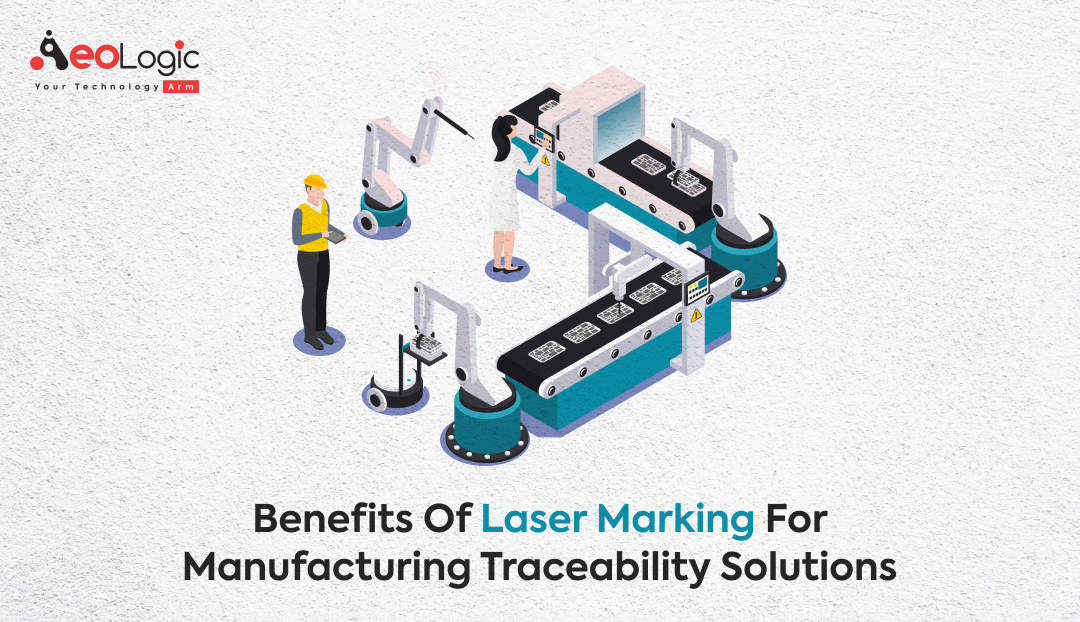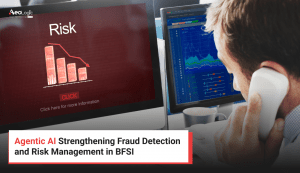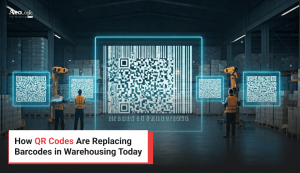In today’s fast-paced manufacturing world, being able to trace the origin and history of a product is more critical than ever. Whether it’s for quality control, product recalls, or simply understanding the lifecycle of an item, traceability is key. Enter laser marking for manufacturing traceability solutions. It’s a game-changer for the industry, and here’s why.
Why Is Traceability So Important in Manufacturing?

Traceability plays a pivotal role in many sectors of manufacturing for a plethora of reasons:
- It helps in identifying the origin of defects and promotes effective quality control.
- It ensures product authenticity and combats counterfeit products.
- Provides essential information during product recalls, protecting both consumers and manufacturers.
Given the weightage of its importance, let’s delve deeper into how laser marking can serve as an ultimate traceability solution.
Also Read our trending blog: Traceability Solutions for Supply Chains with Examples
How Does Laser Marking Work?
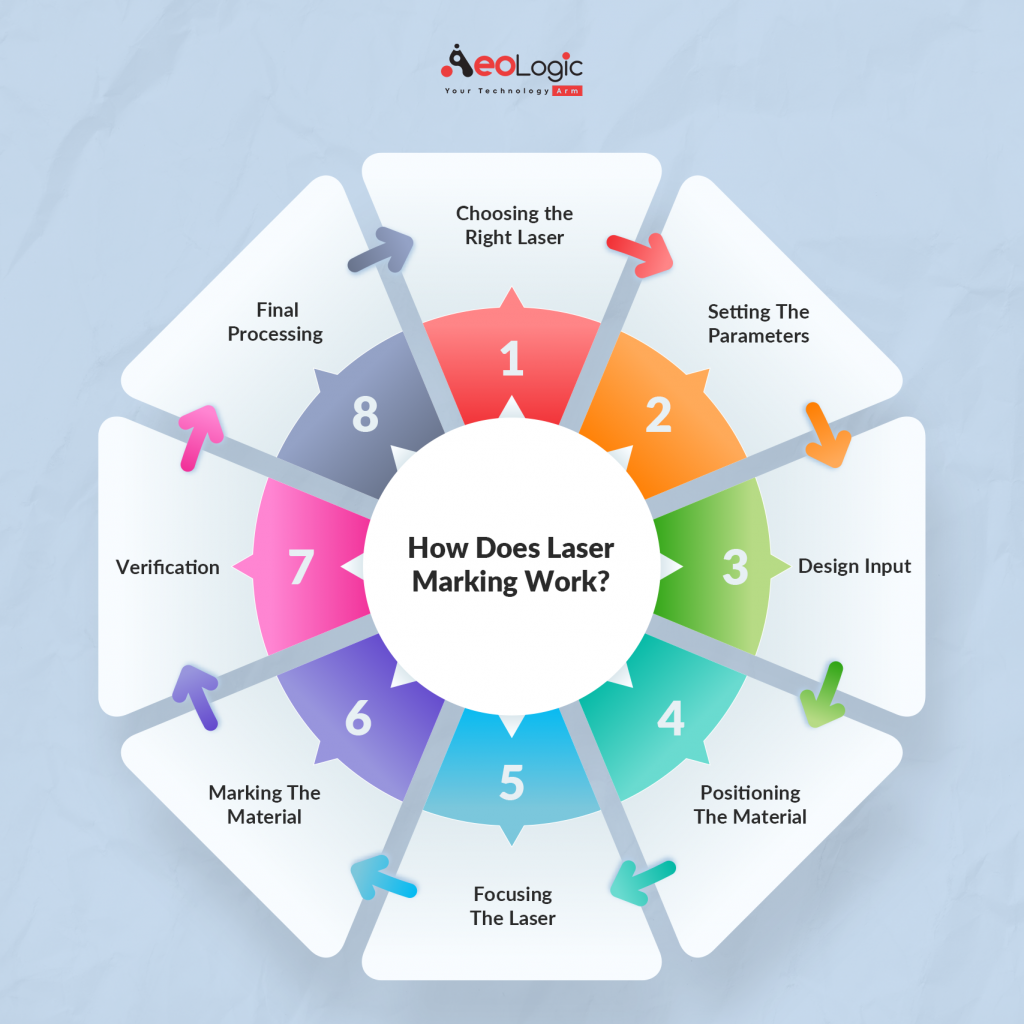
Before we jump into the benefits, it’s crucial to understand the concept. Laser marking involves using a focused beam of light to create permanent marks on surfaces. These marks can be barcodes, QR codes, serial numbers, or any other identifying information.
Laser marking is an intricate process that may seem complex, but it can be broken down into a series of systematic steps. Let’s take a closer look at the step-by-step procedure.
Step 1. Choosing the Right Laser
There are various types of lasers suitable for different materials and desired outcomes. The choice primarily rests between fiber lasers, CO2 lasers, and diode lasers. The material being marked often dictates the type of laser used.
Step 2. Setting the Parameters
Before marking begins, the laser’s parameters like speed, power, frequency, and focus are adjusted. This is crucial as it determines the depth, clarity, and quality of the mark.
Step 3. Design Input
The design, which can be alphanumeric characters, barcodes, QR codes, logos, or any other graphic, is input into the laser system using specialized software. This software translates the design into a format the laser machine understands.
Step 4. Positioning the Material
The material to be marked is positioned correctly under the laser head. This often involves securing the material to ensure there’s no movement during the marking process.
Step 5. Focusing the Laser
The laser is focused onto the surface of the material. This step is vital to ensure that the mark is sharp and clear. Some advanced laser systems come with auto-focusing capabilities, simplifying this step.
Step 6. Marking the Material
Once everything is set, the laser marking process begins. The laser beam interacts with the surface, altering its properties and appearance. Depending on the laser type and material, this can result in a color change, engraving, or even a raised mark.
Step 7. Verification
After marking, it’s essential to verify the quality and accuracy of the mark. This ensures that the marking meets the desired standards and is readable, especially if it contains vital traceability information.
Step 8. Final Processing (if required)
Sometimes, post-marking processes like cleaning or coating might be required, especially if there are any residues from the marking process or if the marked part needs added protection.
By following these systematic steps, laser marking for manufacturing traceability solutions ensures high-quality, durable marks that serve their purpose effectively.
Also Read: The Importance of Traceability in Laboratory Tests
Top Benefits of Laser Marking for Manufacturing Traceability Solutions
In the intricate world of manufacturing, ensuring product traceability is paramount. As technology evolves, laser marking has emerged as a frontrunner for traceability solutions, and for good reasons. Let’s explore the top benefits of adopting this innovative approach.
1. Permanent and Tamper-Proof
Laser marks are permanent, ensuring the traceability of an item for its entire lifecycle. When a product goes through various stages from manufacturing to distribution, it’s susceptible to wear and tear. Traditional labels can degrade or get removed. But with laser marking, the information is etched onto the item’s surface. It provides a robust defense against tampering, ensuring that crucial data remains accessible, making it an invaluable tool for industries where product authentication and traceability are paramount.
Aircraft components often use laser marking to ensure parts can be traced back to their origin for safety protocols.
2. High Precision and Readability
The precision of laser marking technology is a marvel. It’s not just about making a mark; it’s about the clarity and readability of that mark. Even if the design is intricate or the barcode is minuscule, laser marking ensures that every detail is captured with impeccable clarity. Such precision is especially crucial for manufacturing sectors where even a slight error in marking can lead to significant operational challenges. Manufacturers can trust laser technology to convey information accurately, every time.
Medical devices, like surgical instruments, benefit from laser-marked identification for precise tracking.
3. Versatile on Multiple Materials
Versatility is a notable strength of laser marking for manufacturing traceability solutions. Different manufacturing sectors use varied materials, from metals and plastics to ceramics and glass. Not every marking solution is adaptable to these diverse materials. But laser marking stands out, offering consistent results irrespective of the base material. This adaptability means manufacturers aren’t confined by their material choices, making laser marking an indispensable tool in diverse manufacturing environments.
Jewelry items, whether gold, silver, or platinum, often bear laser-marked certifications or brand logos.
4. Eco-Friendly Process
In today’s age of environmental consciousness, industries seek solutions that are both effective and eco-friendly. Laser marking shines brightly in this arena. Traditional marking methods might employ inks and chemicals, which can be harmful to the environment. In contrast, laser marking is a clean process. It doesn’t rely on consumables, which means no harmful emissions or wastage. Thus, businesses can confidently use laser marking, knowing they’re making an environmentally responsible choice.
Organic food packaging uses laser marking to imprint expiration dates without introducing chemicals to the package.
5. Cost-Effective in the Long Run
The initial investment in laser marking equipment might appear substantial, but the benefits it yields over time make it a cost-effective choice. Without the need for consumables like inks or labels, operational costs are significantly reduced. Additionally, with minimal maintenance requirements and the avoidance of recurring expenses, the total cost of ownership becomes much lower over the equipment’s lifespan. For businesses, this translates to substantial savings and a more streamlined operational process.
Automotive industries use laser marking for car parts, saving on long-term labeling and ink costs.
Do you know? Role of Traceability in Sustainable Supply Chain Management
6. Rapid Processing Time
Time is a valuable resource in manufacturing. The swift nature of laser marking means that even large batches of products can be processed quickly. Advanced laser systems are tailored for high-speed operations, marking items in mere seconds. This efficiency isn’t just about speed; it also translates to consistency. Every mark, even in high-volume batches, maintains a consistent quality, ensuring that traceability standards are uniformly met across all products.
Electronic manufacturers laser mark serial numbers on mass-produced items like smartphones efficiently.
7. Minimal Heat Impact
Laser marking’s technology is designed to target specific areas without affecting the surrounding regions of the material. Unlike other processes that can generate excessive heat, potentially damaging materials, laser marking is precise. The heat impact is localized, preserving the structural integrity of the item being marked. This is vital in industries where even minor deformities can compromise a product’s function. With laser marking, businesses can be assured of a mark that’s both clear and non-damaging.
Delicate cosmetic containers are laser marked with batch numbers without compromising the container’s integrity.
Laser marking offers a wide range of benefits suitable for diverse industries, from aviation and medicine to electronics and cosmetics. As the demand for efficient and reliable traceability solutions grows, laser marking for manufacturing traceability solutions continues to prove its unmatched efficacy.
A Quick Glance: Why Choose Laser Marking for Traceability
| Advantages | Details |
|---|---|
| Permanency | Marks are tamper-proof and withstand external conditions. |
| Precision and Clarity | High readability even for complex designs and small details. |
| Versatility Across Materials | Suitable for metals, plastics, ceramics, and more. |
| Environmentally Friendly | No use of harmful chemicals or inks. |
| Cost-Effective | Reduced operational costs in the long run with minimal maintenance. |
| Rapid Processing Time | Efficient for high-volume production. |
| Minimal Heat Impact | Preserves material integrity and function. |
Also Read: The Future of Traceability in the Grocery Industry
Why Choose Aeologic Technologies for Traceability Solutions?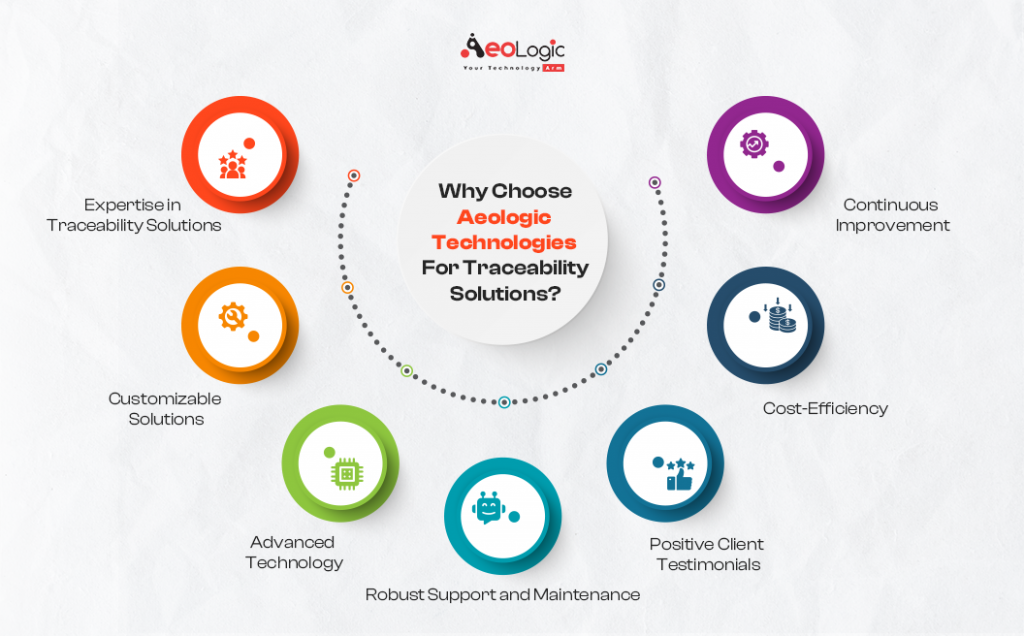
At Aeologic Technologies, we pride ourselves on being at the forefront of traceability solutions. Our unwavering commitment to innovation, combined with our deep understanding of industry dynamics, ensures that we deliver both reliability and the latest in technology. With a proven track record, our team not only provides robust traceability solutions but also partners with businesses to help them excel in today’s competitive landscape. Choosing Aeologic is more than just opting for a solution; it aligns with our ethos of excellence, precision, and a progressive vision for the future.
Final Words
When it comes to traceability in manufacturing, it’s vital to have a reliable, efficient, and sustainable solution. Laser marking ticks all these boxes. The permanency, clarity, versatility, and eco-friendliness make laser marking for manufacturing traceability solutions an industry favorite. As technology continues to evolve, we can only expect this method to become more integral to the manufacturing world.
Frequently Asked Questions
How durable are the markings created by laser marketing for manufacturing traceability solutions?
These markings are exceptionally durable. They can resist abrasions, high temperatures, and chemicals, ensuring that the traceability data remains intact.
Is laser marking suitable for high-volume manufacturing processes?
Absolutely. Laser marking systems are designed for high-speed operations and can seamlessly integrate into automated production lines.
Can laser marking be used on organic materials?
While laser marking is primarily used on metals and plastics, certain organic materials like leather can also be marked using specific laser types.

